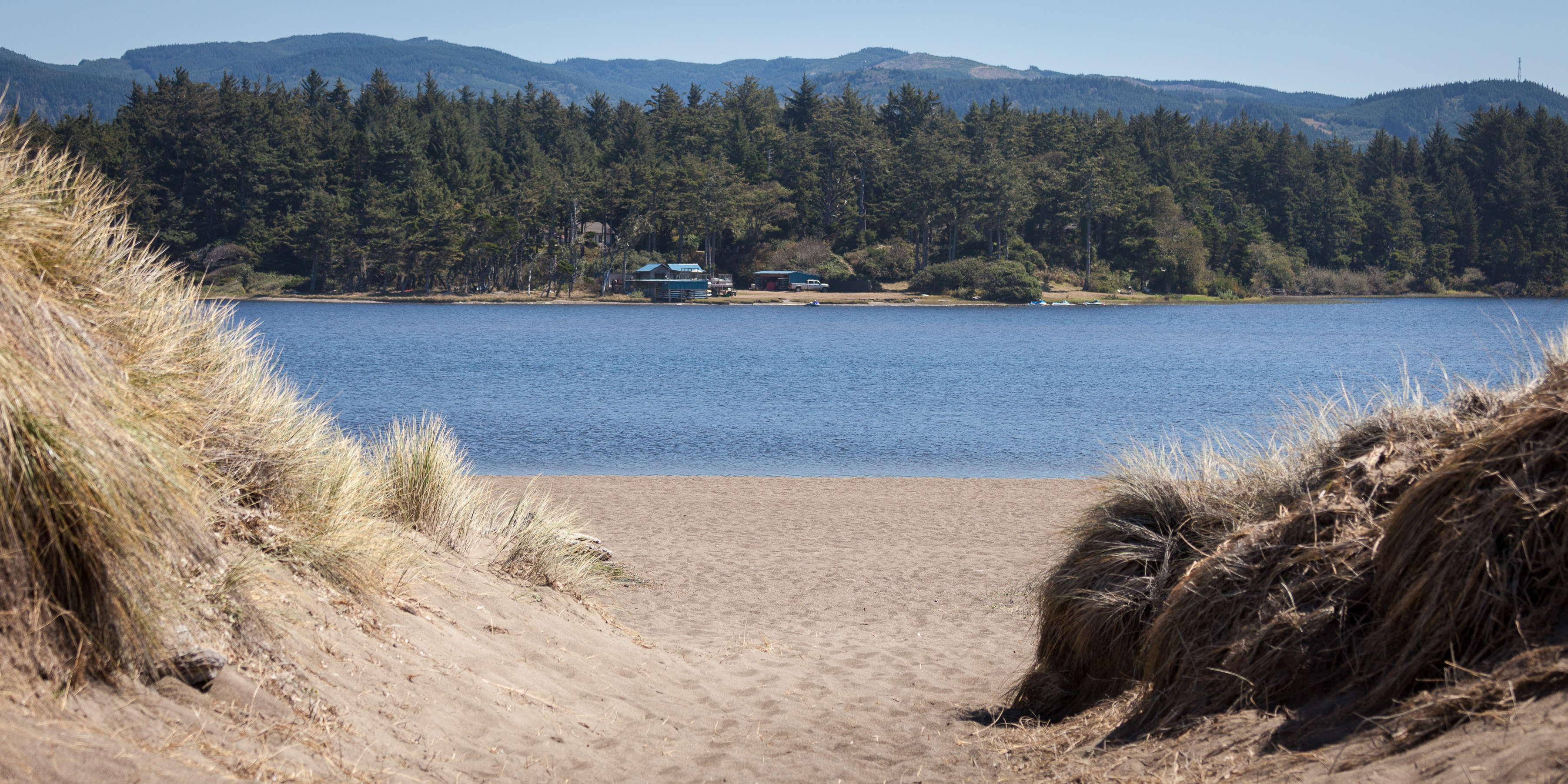
Photo courtesy of Halvor Tweto
Floras Lake is well known as a destination for fans of wind-powered water sports. The lake is only separated from the ocean by a thin strip of dune and beach, so coastal winds frequently whip across this freshwater body. Kiteboarders and sailboarders alike find just the right mix of elements and geography on the lake, and with the option to stay overnight in Boice-Cope County Park, waiting for the right weather is easy.
Floras Lake is also part of the New River Area of Critical Environmental Concern, and the area around the lake is home to some of the same species of rare flora described at the New River Learning Center. Snowy plovers nest nearby, and the lake also receives annual traffic from migrating Aleutian Canada geese. The Floras Lake Trail is an excellent walk through this unique habitat, and it is an easy and rewarding side trip if your itinerary includes several activities.
Leaving from the small parking area, the trail crosses Floras Creek, said to have formed the New River channel during a high water event in 1890. Once you’re on the sand trail that winds around Floras Lake, you’ll have the chance to break off from it the and reach the ocean after only a half mile, or you can continue down to another small beach access trail approximately 0.8 miles from the trailhead. If you are looking for more to explore in the area, the Floras Lake Trail connects with the Oregon Coast Trail as it leads into Floras Lake State Park. Here you can follow the path as it plunges into the thicker coastal canopy. If you decide to return from any of these points along the beach, be very aware of protected snowy plover habitat; many areas along the beach are closed from March 15 through September 15 to protect this endangered species.
Note that areas in the Bandon State Natural Area, New River Area of Critical Environmental Concern, and around Floras Lake are considered nesting habitat for the western snowy plover; dogs and other specified recreational activities are prohibited in certain areas between March 15 and September 15 to accommodate nesting and encourage the recovery of this threatened species.